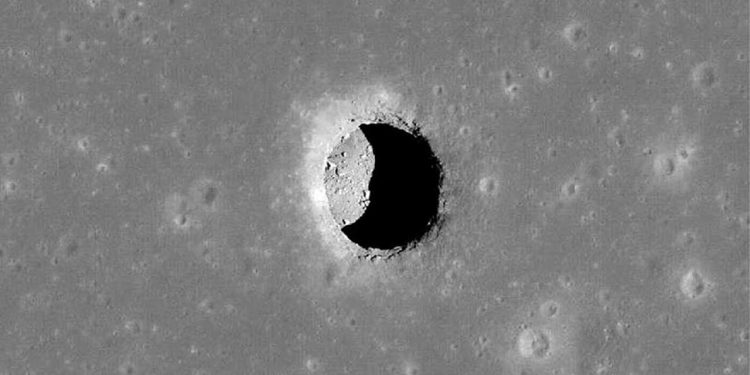Astronomers have identified a significant lunar cave structure that could pave the way for future human habitation on the Moon. This discovery comes as a major breakthrough in the field of lunar exploration and potential colonization.
The cave, located in the Sea of Tranquility—historically notable for being the site of humanity’s first lunar landing—was revealed through research published in Nature Astronomy. The study, led by Lorenzo Bruzzone and Leonardo Carrer from the University of Trento, presents compelling evidence of a subterranean structure approximately 80 meters long and 45 meters wide, situated at the base of a 135-meter-deep pit.
The Moon’s surface is notoriously inhospitable, with extreme temperature variations ranging from -246°C to 121°C, constant exposure to cosmic radiation, and relentless meteorite bombardment. In contrast, subsurface lunar caves offer a stable environment, shielded from these harsh conditions. These natural formations could serve as ideal habitats for future astronauts, providing protection from the Moon’s hostile surface conditions.
The exact origins of the cave remain a subject of investigation. It is hypothesized that the cave could be the remnant of a volcanic tube, created by ancient lava flows. The ceiling of this lava tube might have collapsed—potentially due to a meteorite impact—leaving behind the pit and its surviving cave structures.
This discovery opens up exciting possibilities for lunar exploration, as such caves could be developed into sustainable living spaces for astronauts and future lunar missions. The stability of these subsurface environments makes them particularly appealing for long-term habitation and research on the Moon.
As space agencies and scientists continue to explore the Moon, this finding represents a significant step forward in understanding the potential for human settlement beyond Earth.







